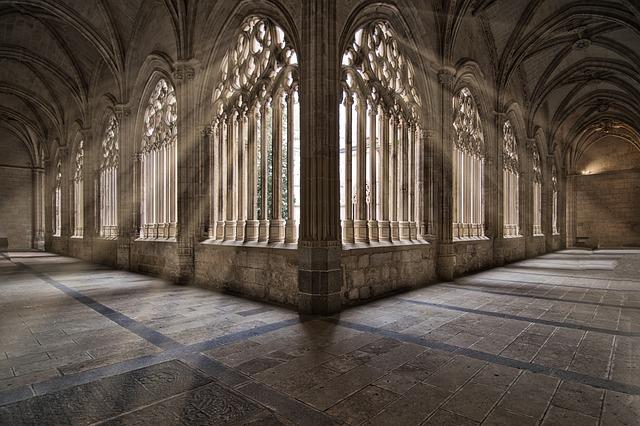within the evolving narrative of west Africa’s architectural panorama, a brand new exhibition titled “Structure Encounters” emerges as an important lighthouse, illuminating the wealthy tapestry of constructed environments that experience formed Togo and the wider area. Curated with a prepared eye for element and ancient context, this exhibition delves into period-defining tales that mirror no longer most effective the cultured evolution of structure but in addition the socio-cultural and political undercurrents influencing the constructed atmosphere. From colonial constructions to recent designs that embrace a fusion of custom and innovation, “Structure Encounters” gives a profound exploration of ways those areas resonate with the identities and aspirations of communities. As we navigate thru this compelling presentation, we’re invited to rethink the position of structure as a very important storyteller of human enjoy in West Africa.
Exploring Architectural Narratives that Outline Togo’s Heritage
From the intricate designs of sacred constructions to the daring traces of recent edifices, the architectural panorama of Togo is a wealthy tapestry that weaves in combination historical past, tradition, and id. Every construction, whether or not nestled within the center of Lomé or sprawled around the serene geographical region, tells a singular tale that resonates with the recollections of those that constructed it.Conventional Togolese structure, characterised by means of its colourful colours and natural fabrics, contrasts sharply with the fashionable architectural actions that experience emerged in contemporary a long time. This juxtaposition gives an interesting perception into the country’s evolving narrative, inviting onlookers to mirror on how those constructions encapsulate the essence of Togolese heritage whilst responding to the calls for of contemporary lifestyles.
The constructed atmosphere serves no longer simply as a backdrop however as a dynamic player within the social cloth of Togo. As urbanization hurries up, the conversation between outdated and new turns into ever extra essential. Key architectural traits in Togo that experience emerged come with:
- Adoption of Lasting Ways: A focal point on eco-friendly materials and building strategies.
- Integration of Native Artistry: Native craftspeople are more and more keen on architectural initiatives.
- Neighborhood-Centric Designs: Environments that foster social interactions and communal actions.
As we delve deeper into the architectural narratives that outline Togo,it’s certainly very important to imagine no longer most effective the cultured worth of those constructions but in addition their position in reflecting the country’s id and aspirations.The evolution of those areas will also be chronicled thru quite a lot of architectural milestones, each and every marking a section within the socio-political and cultural construction of the rustic.
| Architectural milestone | 12 months | Importance |
|---|---|---|
| Independence Monument | 1960 | Image of nationwide pleasure and sovereignty. |
| Uncooked fabrics financial institution | 1995 | Exhibit of modernist structure mixing with native ways. |
| The Palais des Congrès de Lomé | 2000 | Middle for world occasions and cultural trade. |
In exploring those intricate layers of architectural importance, we acquire treasured perception into how Togo’s constructed atmosphere continues to form and outline its cultural panorama, encouraging a deeper reputation for the tales embedded inside its partitions.

The constructed environments of West Africa are profound reflections of the communities they serve, embodying a tapestry of cultural narratives, conventional practices, and social dynamics. Thru participatory design approaches, native populations actively have interaction within the architectural procedure, making sure that constructions resonate with their id and desires. This synergy between structure and network will also be observed in quite a few key parts, together with:
- Adaptive reuse of fabrics: Native assets are creatively hired, showcasing sustainable practices and cutting edge designs.
- Neighborhood-driven initiatives: Tasks led by means of native artists and stakeholders permit for customized, related designs that give a boost to network pleasure.
- Cultural symbolism: Architectural options regularly draw on ancient or non secular importance,weaving in native legends and traditions into recent designs.
In Togo, those network influences manifest in colourful public areas, conventional markets, and communal collecting spaces that no longer most effective satisfy purposeful necessities but in addition foster social brotherly love. The framework of those areas serves as a platform for quite a lot of cultural expressions, the place gala’s, markets, and casual gatherings come to lifestyles. The interplay between other people and the constructed atmosphere resonates in a distinctly African context, paving the way in which for a renewed working out of structure as a residing follow that evolves with its network:
| Component | Description |
|---|---|
| Neighborhood Facilities | Areas designed for native gatherings, workshops, and occasions, improving social bonds. |
| Marketplaces | Colourful hubs that mirror native economies and crafts, serving as the guts of social trade. |
| Public Artwork | Work of art and sculptures that advertise cultural narratives and native ability, enrich the surroundings. |

Iconic Buildings: A Adventure Thru Togo’s Architectural Evolution
Togo’s architectural panorama showcases a wealthy tapestry of influences that experience formed its id over centuries.From the conventional dust huts within the rural areas to the colonial edifices scattered right through Lomé,each and every construction speaks a story of cultural resilience and adaptation. The unique architectural types discovered throughout Togo illustrate the rustic’s adventure, representing quite a lot of epochs and the interaction between indigenous practices and international inspirations. Important examples come with:
- The Akodessewa Fetish Marketplace: A colourful hub reflecting the non secular ideals thru its distinctive building.
- Palais des Congrès: A testomony to modernist design that stands on the center of Lomé’s civic pleasure.
- The Grand Hôtel du Togo: A symbol of colonial structure that continues to host a very powerful occasions.
This architectural evolution isn’t simply a visible show but in addition a discussion between the previous and provide,highlighting Togo’s quest for a definite nationwide id. The transition will also be considered throughout the lens of sustainability and modernization, as recent architects mix conventional fabrics and strategies with fashionable design ideas. In Togo, traits like eco-friendly construction and using locally sourced materials are changing into distinguished, reflecting a rising consciousness of environmental demanding situations. The next desk summarizes key sessions and types in Togo’s architectural historical past:
| Length | Architectural Taste | Key Options |
|---|---|---|
| Pre-Colonial | Conventional Dust Buildings | Spherical shapes, thatched roofs, communal areas |
| Colonial | Eu Affect | Symmetrical designs, stucco finishes, huge verandas |
| Submit-Independence | Modernist Structure | swish traces, open areas, integration of native motifs |

Holding Cultural Id Thru Trendy Design Practices
The evolution of design in Togo and West Africa has turn out to be a very important platform for showcasing and protecting cultural id. By way of incorporating conventional motifs, native fabrics, and ancient narratives into fashionable architectural practices, designers create areas that resonate with the cultural heritage of those areas. The intersection of recent design with indigenous parts no longer most effective honors previous legacies but in addition fosters a sense of belonging and continuity. Architects are more and more rewriting the narrative of native structure by means of embedding tales that mirror the network’s values,aspirations,and distinctive traits.
Moreover, as urbanization transforms the landscapes of Togo and the encircling spaces, sustainable practices play an very important position in keeping up cultural landscapes. Attractive with native artisans and craftspeople guarantees that conventional ways are upheld whilst adapting to trendy wishes. For example, designers are specializing in:
- Neighborhood Engagement: Involving native stakeholders within the design procedure.
- Subject material Reuse: Using reclaimed fabrics to mirror historical past.
- Local weather Adaptability: Designing constructions that harmonize with the native local weather.
| Component | Conventional Importance | Trendy Request |
|---|---|---|
| Textiles | Cultural storytelling and heritage | Wall coverings and material in interiors |
| stones | Ancient building strategies | Herbal finishes and façade designs |
| Patterns | Symbolic meanings distinctive to native tribes | Trendy graphic design parts in structure |

Sustainable Structure: Inventions in West Africa’s City Areas
The colourful panorama of West African towns is present process a progressive conversion, pushed by means of a wave of sustainable design practices that cope with each environmental issues and the cultural context of the area. in Togo, cutting edge architects are integrating conventional fabrics and strategies with fashionable eco-friendly applied sciences. This synergy guarantees that the constructed atmosphere no longer most effective respects the ecological footprint but in addition celebrates native heritage. Key sides of this cutting edge method come with:
- Use of Native Fabrics: Using clay, bamboo, and different indigenous assets is helping scale back transportation emissions.
- Passive Design Methods: Maximizing herbal mild and air flow to attenuate calories use.
- Rainwater Harvesting Techniques: Imposing sustainable water control practices.
Moreover, the point of interest on community-oriented areas revitalizes city spaces whilst fostering social interplay and inclusivity. Fairly of simply serving purposeful functions, the constructions are designed as cultural landmarks that give a boost to the id of neighborhoods. Tasks like network gardens, multifunctional public parks, and native artwork installations assist bridge the space between structure and the network’s wishes. A show off of those inventions will also be encapsulated within the following desk:
| Sustainable Options | Advantages |
|---|---|
| Sun Panels | Renewable calories technology, lowering software prices. |
| Inexperienced Roofs | Insulation, city warmth aid, and biodiversity give a boost to. |
| Recycled Fabrics | Minimizes waste and promotes round economic system practices. |

Long run Views: Bridging Custom and modernity in Togo’s Structure
The architectural panorama of Togo is a brilliant tapestry that seamlessly intertwines conventional craftsmanship with recent inventions.This synthesis no longer most effective displays the wealthy cultural heritage of the country but in addition embraces the foundations of sustainability and fashionable design. Architects and developers are more and more having a look to combine native fabrics and conventional construction ways whilst adopting fashionable aesthetics that resonate with lately’s city environments. community-centric designs, reminiscent of open communal areas and multi-functional constructions, are changing into prevalent, illustrating a shift in opposition to improving social interplay and cultural resonance inside city making plans.
because the country grapples with speedy urbanization, the desire for adaptive reuse of ancient constructions along fashionable trends has won momentum.By way of protecting ancient websites and incorporating them into the architectural narrative, Togo can create a particular atmosphere that honors its previous whilst paving the way in which for long term generations. Towns like Lomé are witnessing a upward thrust in eco-friendly projects that advertise energy-efficient methods and concrete greenspaces, demonstrating a dedication to each modernity and ecology. This refined stability between keeping up cultural id and embracing technological developments is very important for crafting a resilient architectural long term in Togo.
Wrapping Up
“Structure Encounters” serves as a very important conduit for working out the intricate narratives woven into the constructed environments of Togo and West Africa. By way of spotlighting important architectural milestones and their socio-cultural implications, the exhibition illuminates how those constructions echo the area’s ancient and recent transformations. As we transfer ahead, it turns into more and more very important to comprehend and have interaction with the tales in the back of our areas, acknowledging the deep connections between structure, id, and heritage. As Togo and its neighbors proceed to adapt, the insights introduced in “Structure Encounters” will surely encourage long term dialogues across the importance of sustainable and culturally resonant design in shaping the narrative of West Africa’s constructed panorama.
Source link : https://afric.news/2025/02/27/architecture-encounters-traces-period-defining-built-environment-stories-in-togo-and-west-africa-wallpaper/
Writer : Noah Rodriguez
Post date : 2025-02-27 03:18:00
Copyright for syndicated content material belongs to the related Source.



